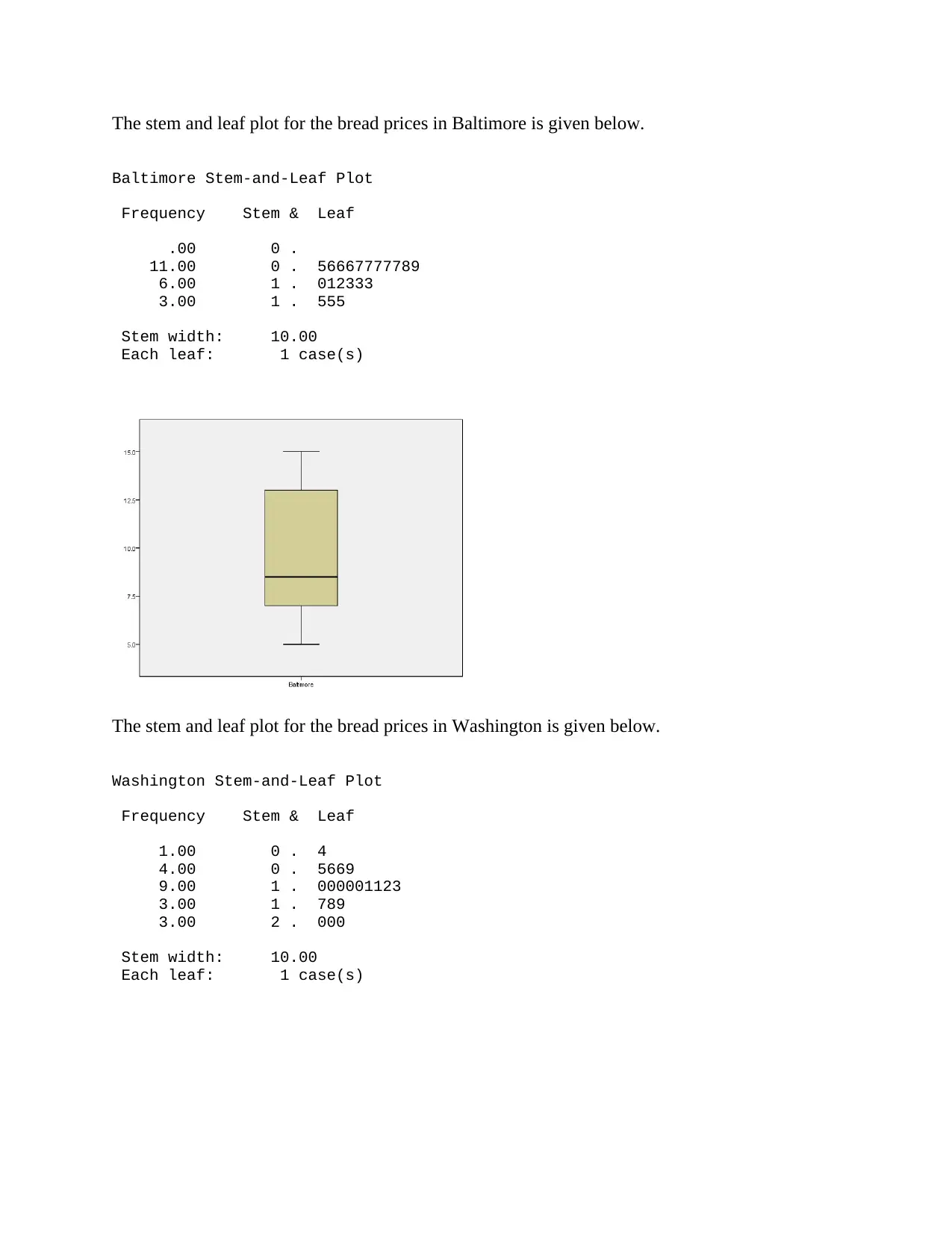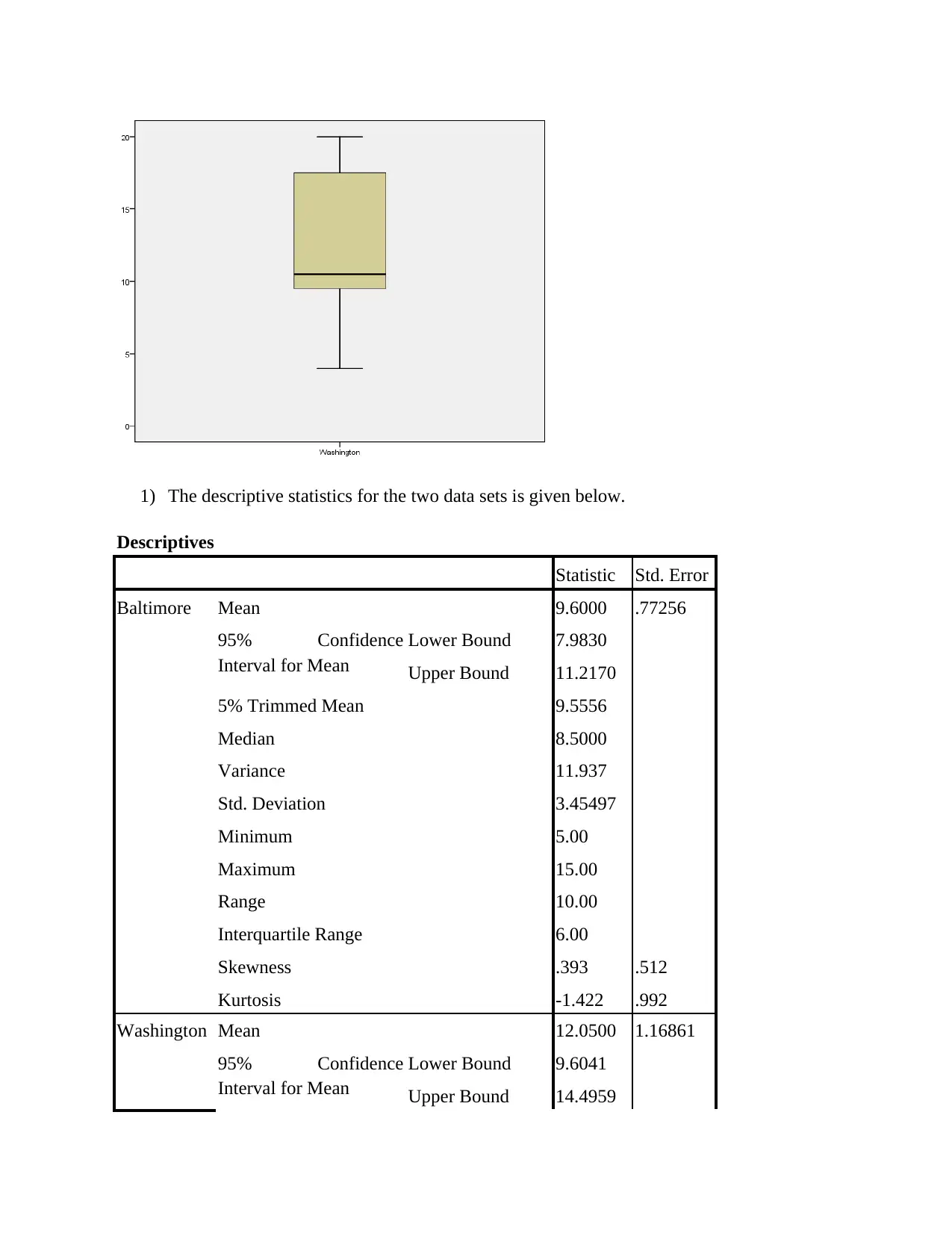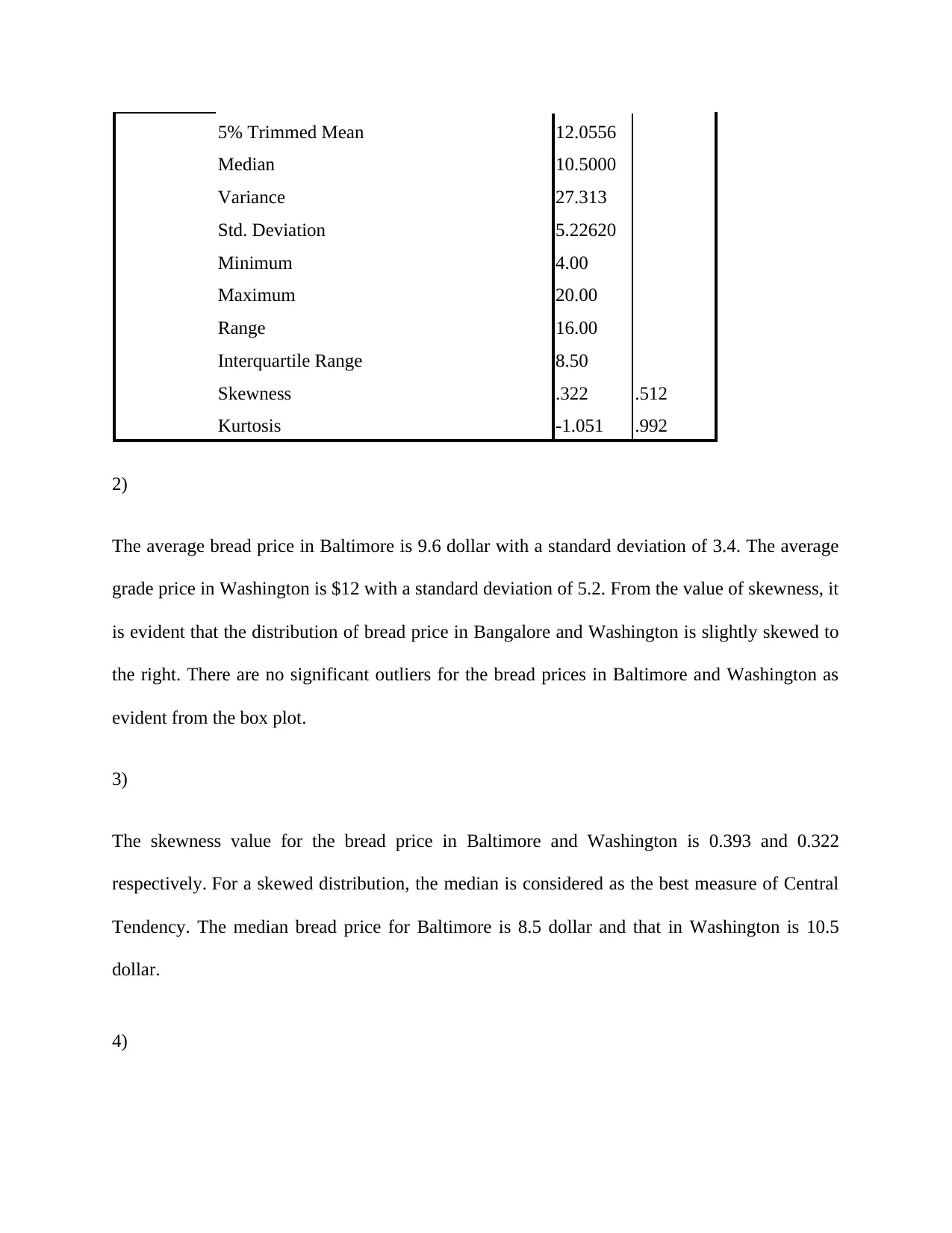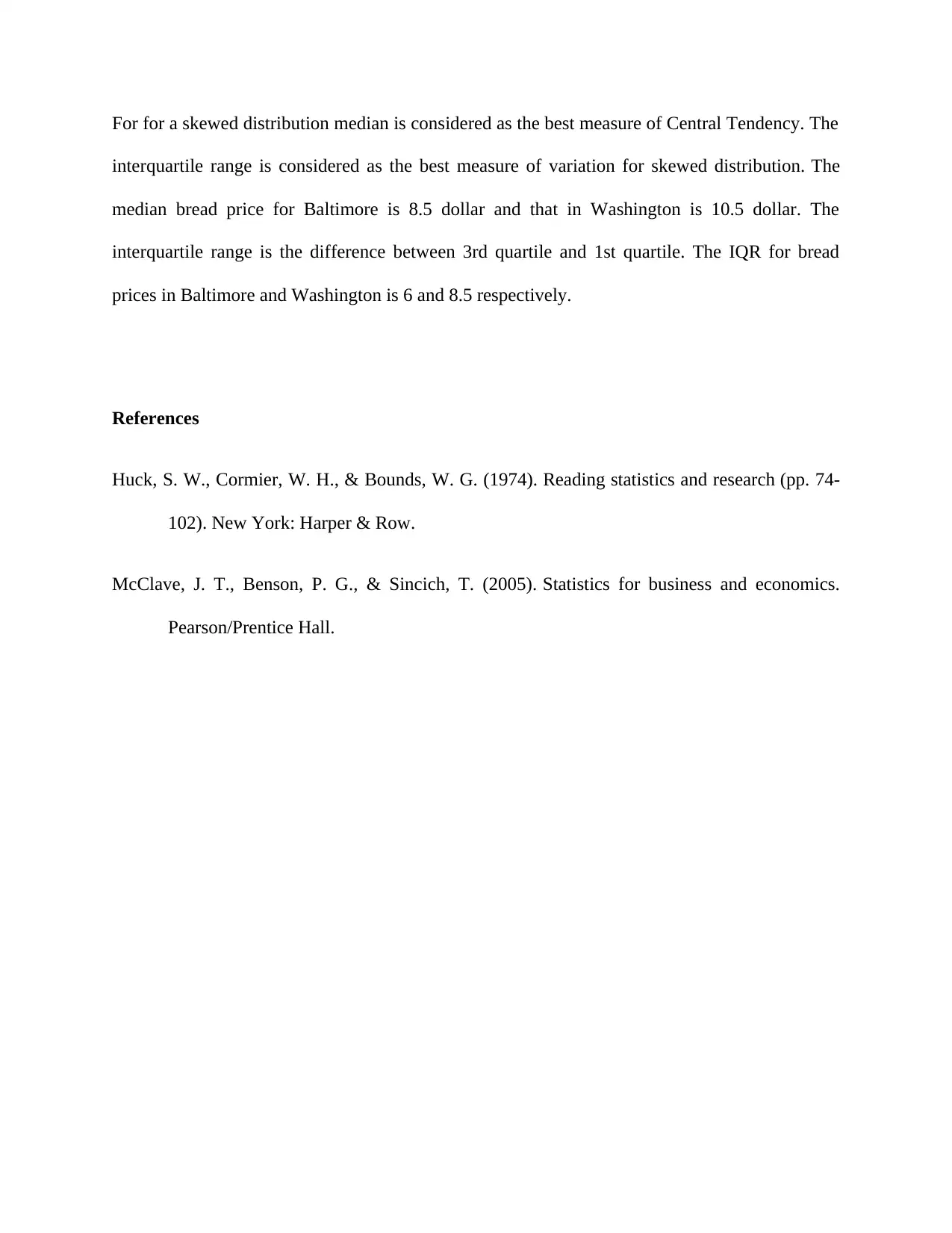Analyzing Bread Price Data: Baltimore, Washington Statistical Report
VerifiedAdded on 2019/09/30
|4
|483
|546
Homework Assignment
AI Summary
This assignment presents a statistical analysis comparing bread prices in Baltimore and Washington. The analysis includes stem-and-leaf plots, descriptive statistics (mean, median, standard deviation), and measures of skewness. The student calculates and interprets key statistical values for both cities, including the median and interquartile range, to understand the central tendency and variability of bread prices. The report concludes that the median is the best measure of central tendency for skewed distributions, and the interquartile range is the best measure of variation for skewed distributions, providing a comparative analysis of bread price distributions in the two cities, drawing conclusions based on the statistical findings. The report cites references to support the statistical methods used.
1 out of 4







![[object Object]](/_next/static/media/star-bottom.7253800d.svg)